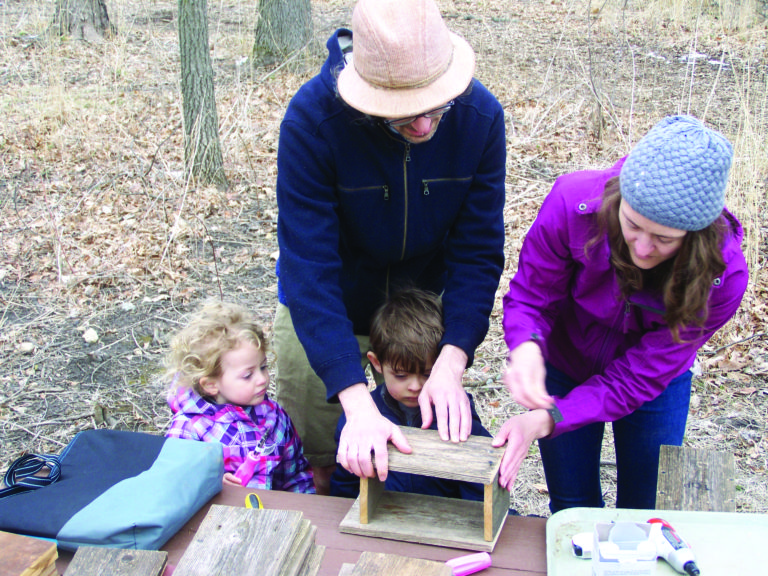
By Dan Tortorice
Friends of Lake View Hill Park
Paul Noeldner, coordinator of Madison Friends of Urban Nature (FUN), calls it “one of the biggest citizen-science programs ever done.” He is referring to the thousands of Americans who responded to the huge decline in bluebird populations in the late 20th century by building and placing houses for the birds to occupy.
The orange and blue thrushes we know as bluebirds were abundant in the ancient forests of North America. When forests were cleared for agriculture, the birds adapted by nesting in the cavities of rotting fence posts. But the conversion to metal fence posts, competition from invasive species such as house sparrows and starlings, and the increasing use of pesticides contributed to a nearly 70 percent decline in population by the 1970s. Volunteers have constructed thousands of bluebird houses throughout the country and brought back these beautiful and useful birds.
The Northside has an active group of bluebird supporters who have constructed trails of houses all across our neighborhoods. There are three trails in Maple Bluff, one in each unit of Cherokee Marsh, two in Warner Park and others in Meadow Ridge Park, Yahara Heights Park, the wetland near Oscar Mayer and the area around the VFW on Highway CV.
We now have a trail on the sunny slopes of Lake View Hill Park. On April 21 a group of neighbors got together to build and mount 12 bluebird houses in a trail around the hill. The wood was donated to Wild Warner by Ryan Funeral Home, which was removing a weathered red cedar fence, perfect house material for bluebirds. The project was coordinated by FUN, along with Bluebird Restoration of Wisconsin. Noeldner showed us how to assemble the already-cut boards and how to mount them on poles.
Hopefully, the houses will be discovered by male bluebirds that will put in a few sticks and start to advertise for a mate. The females will then finish the nest and produce two or three broods by the end of the season. Typically, bluebirds will use about a quarter of the houses. Other native bird species, such as chickadees, house wrens and tree swallows, will also use the houses. Non-native species, such as house sparrows, will be removed.
Each trail has a “bird buddy” to perform weekly checks on the boxes. Joyce Burmester is Lake View Hill’s “buddy.” She plans to give each of the houses its own name, “rather like naming the Holstein cows on our farm in Minnesota,” she said. Joyce will visit the houses every week on Wednesday mornings, but this might change as the summer goes on. She welcomes people to join her. To learn exact times, email Joyce at rr2caldonia@gmail.com.
Our bluebird trail begins near the west entry of the main path through the woods behind the Dane County Human Services building. Bluebirds prefer open spaces, so the trail proceeds south to the big open hill near the west end of the building then across to the flagpole near the fountain, down the east side of the big hill and across to the bottom of the west side of the hill.
Visitors are likely to see a bluebird sitting on top of a house or in a tree nearby. Please remember the nests are protected by federal law and should not be touched.
We hope this fun and useful application of citizen science will produce an abundant population of new bluebird neighbors. They are symbols of happiness that will provide a colorful splash of beauty. And they eat lots of pesky summer insects as well.
Learn more about the park at lakeviewhill.org or Facebook.com/lakeviewhill.